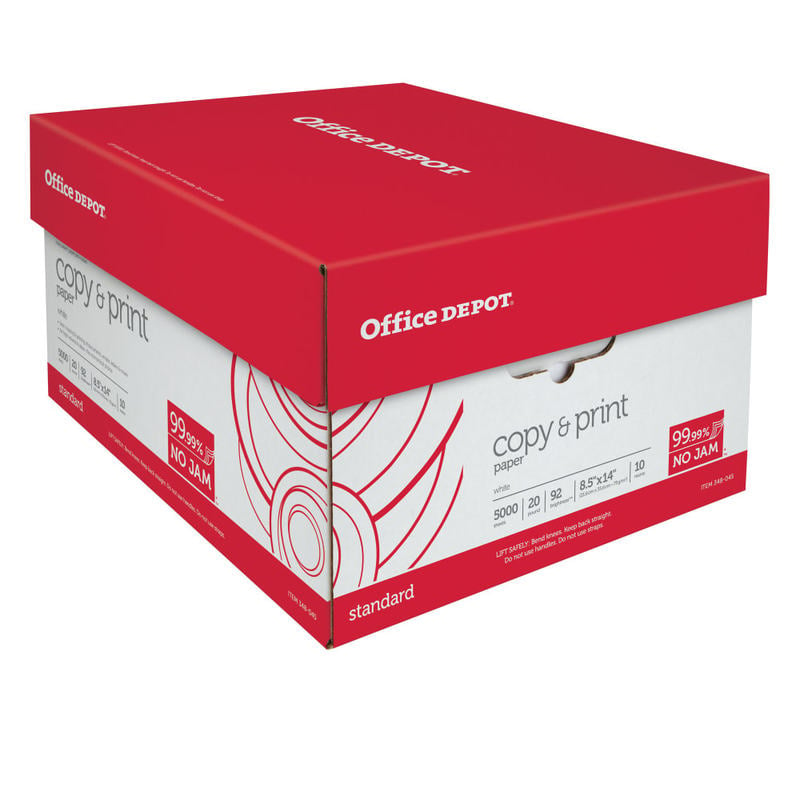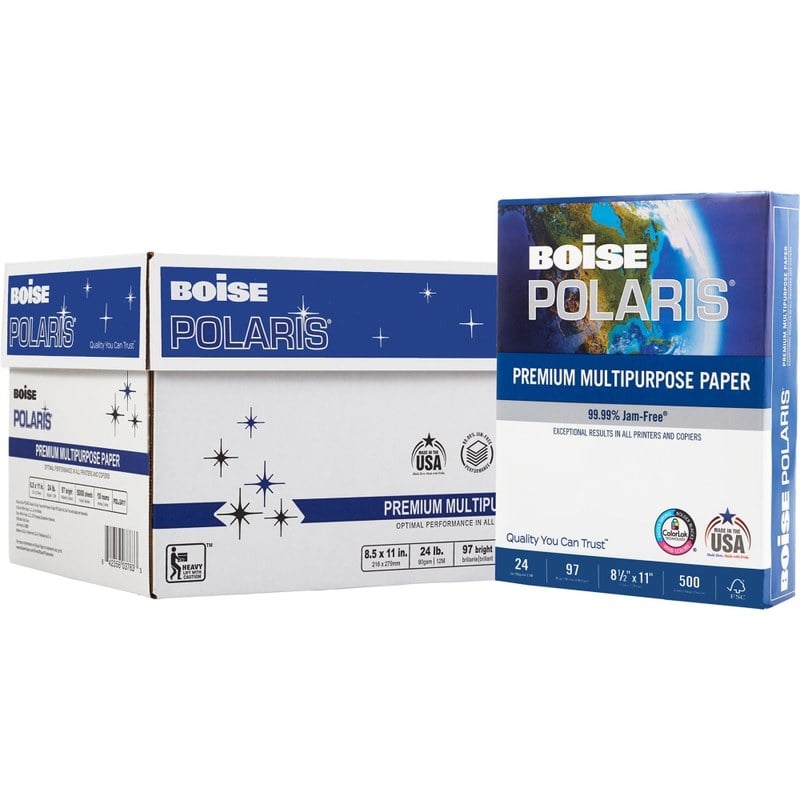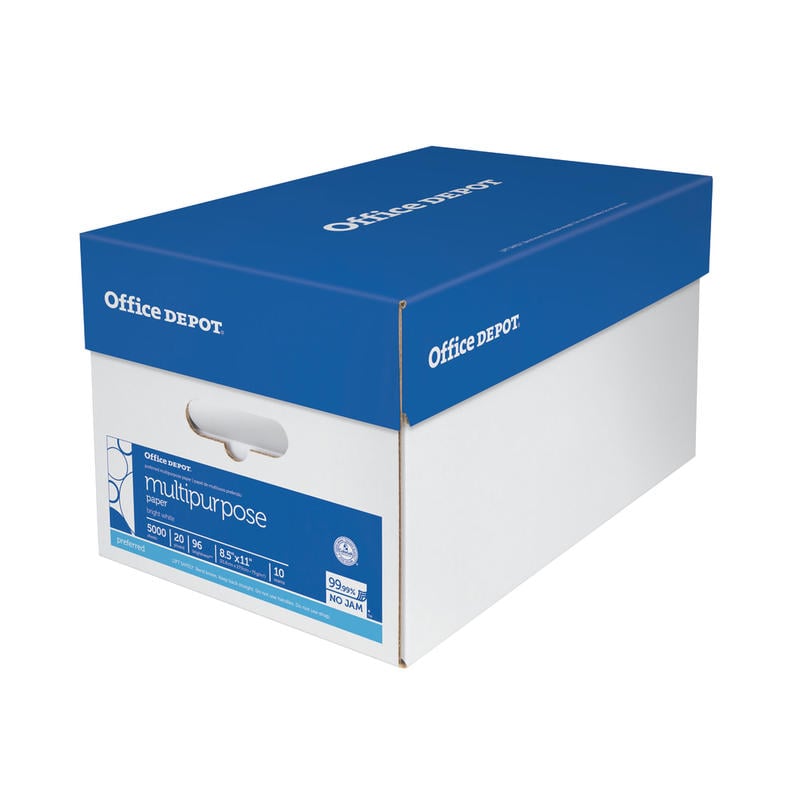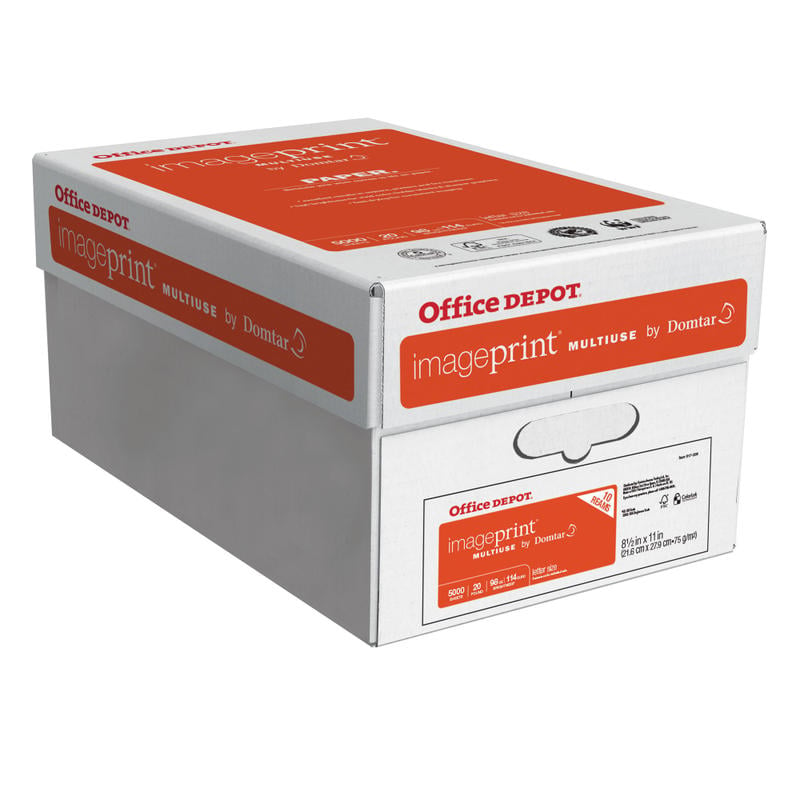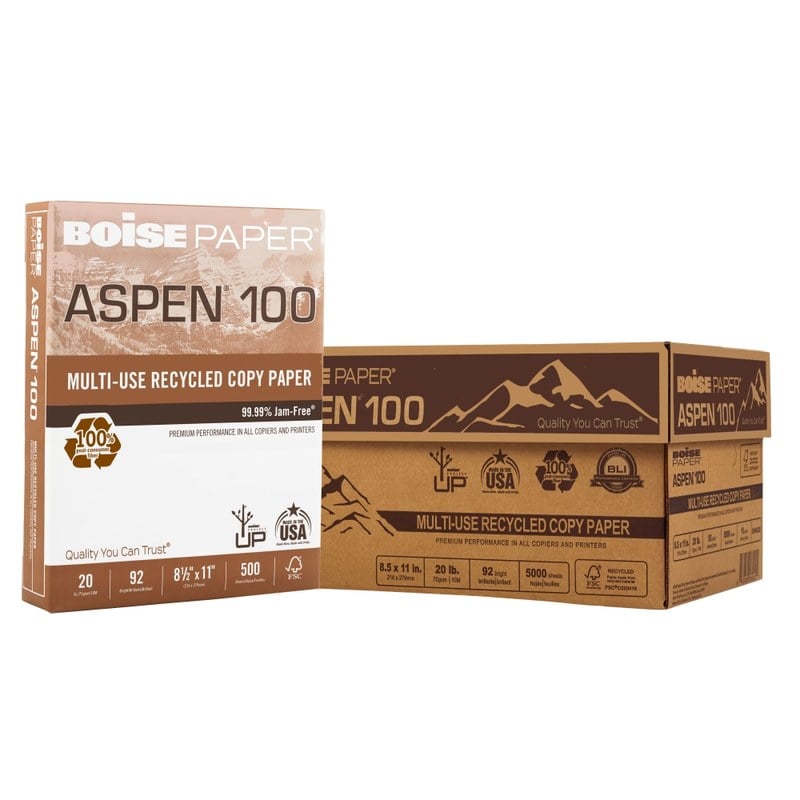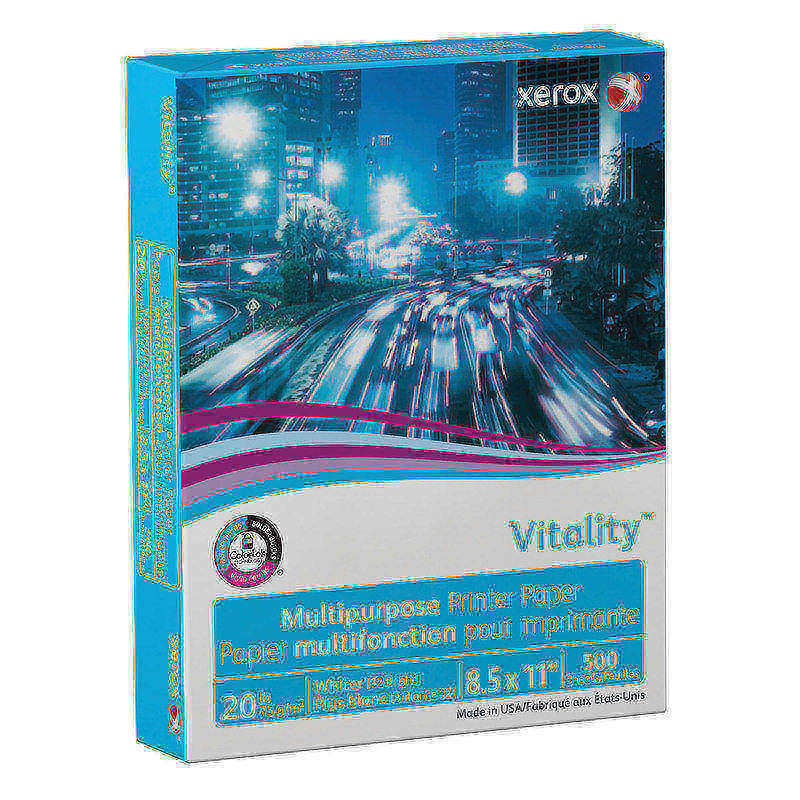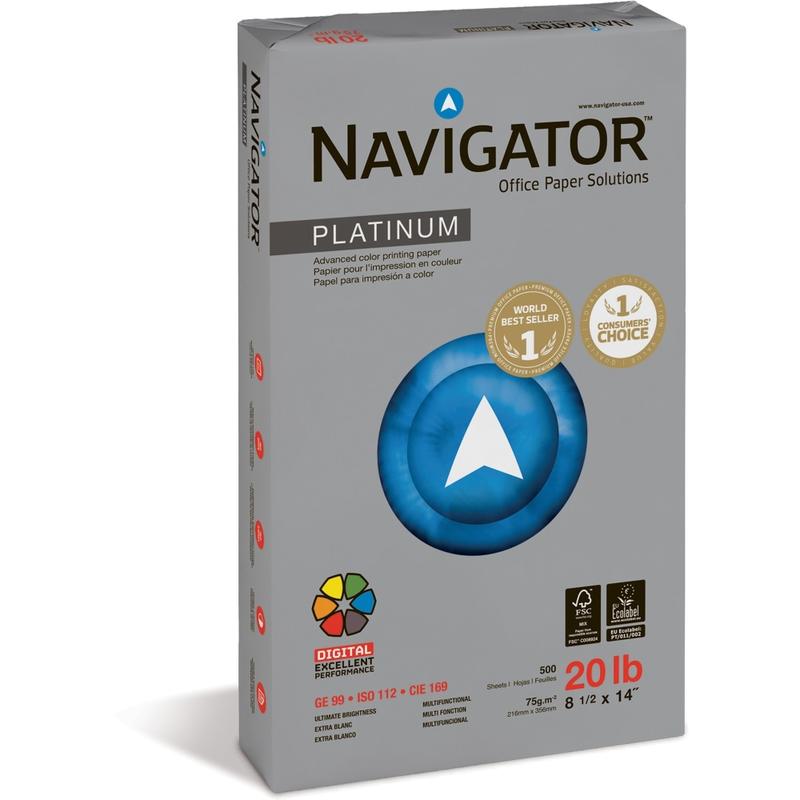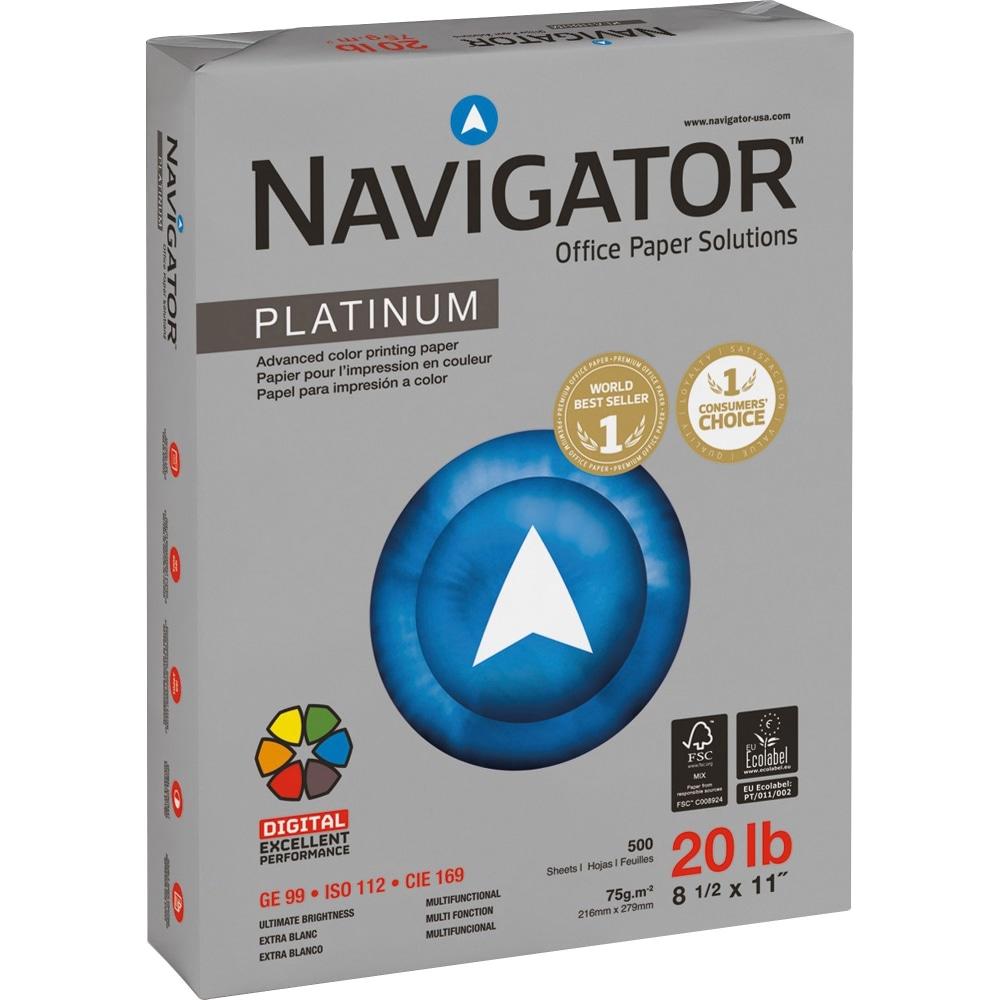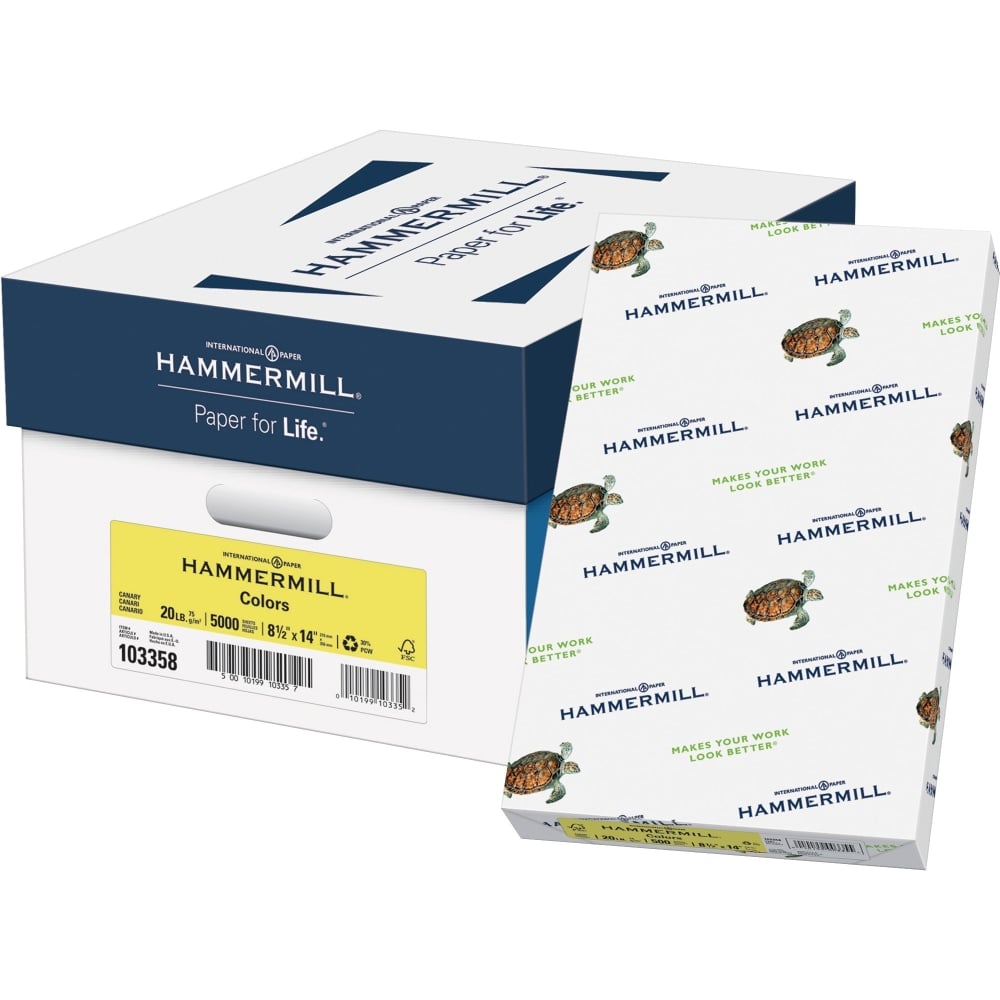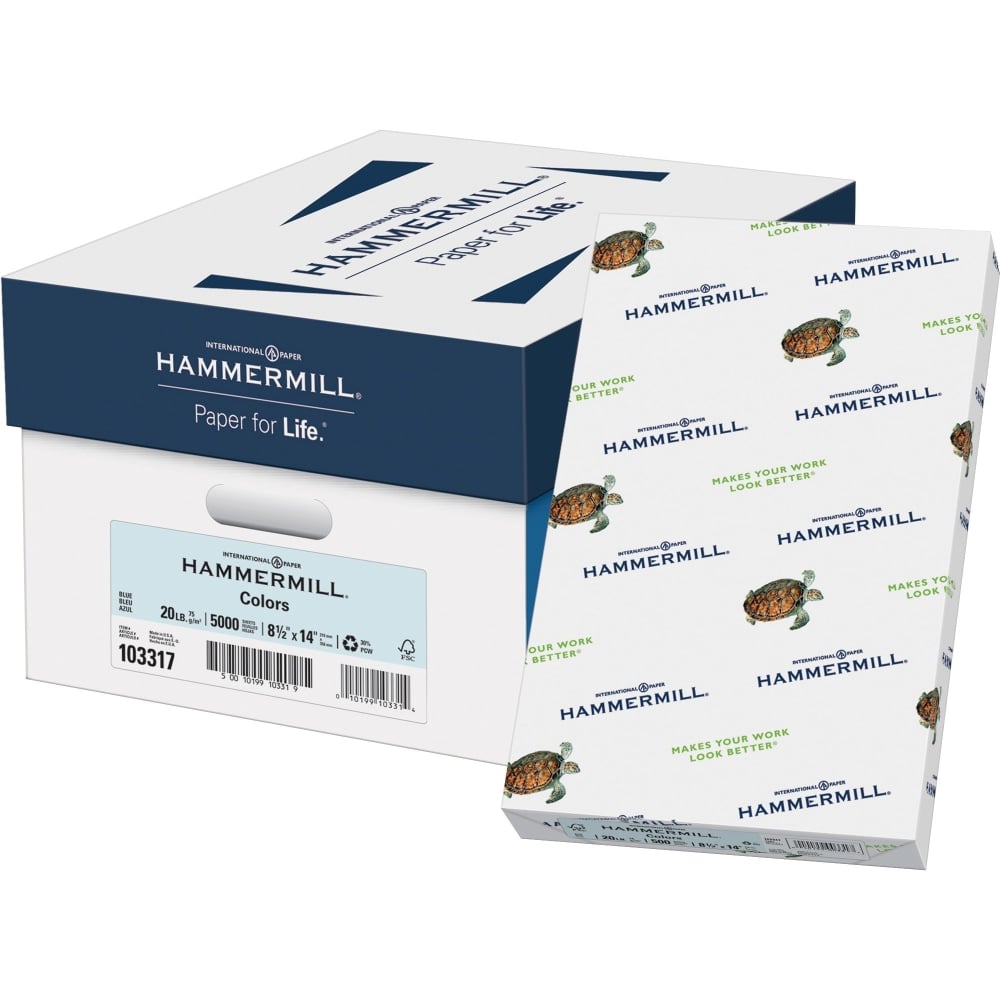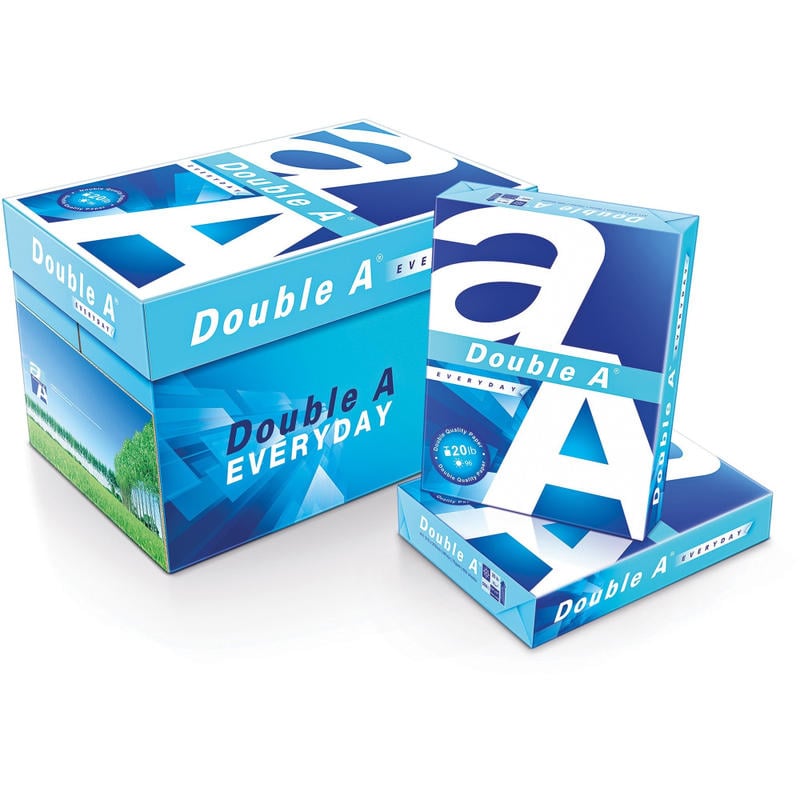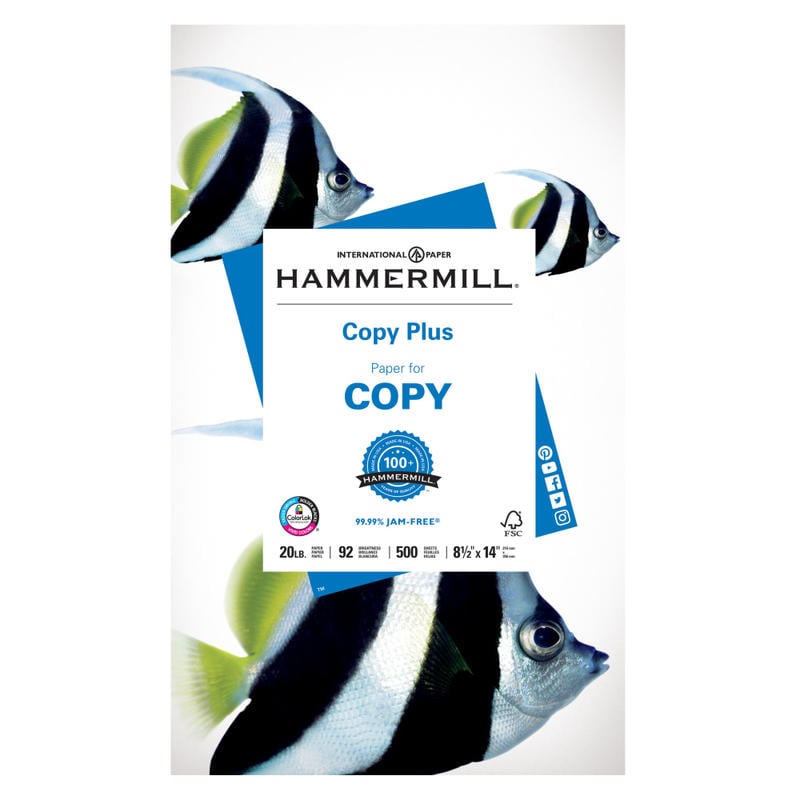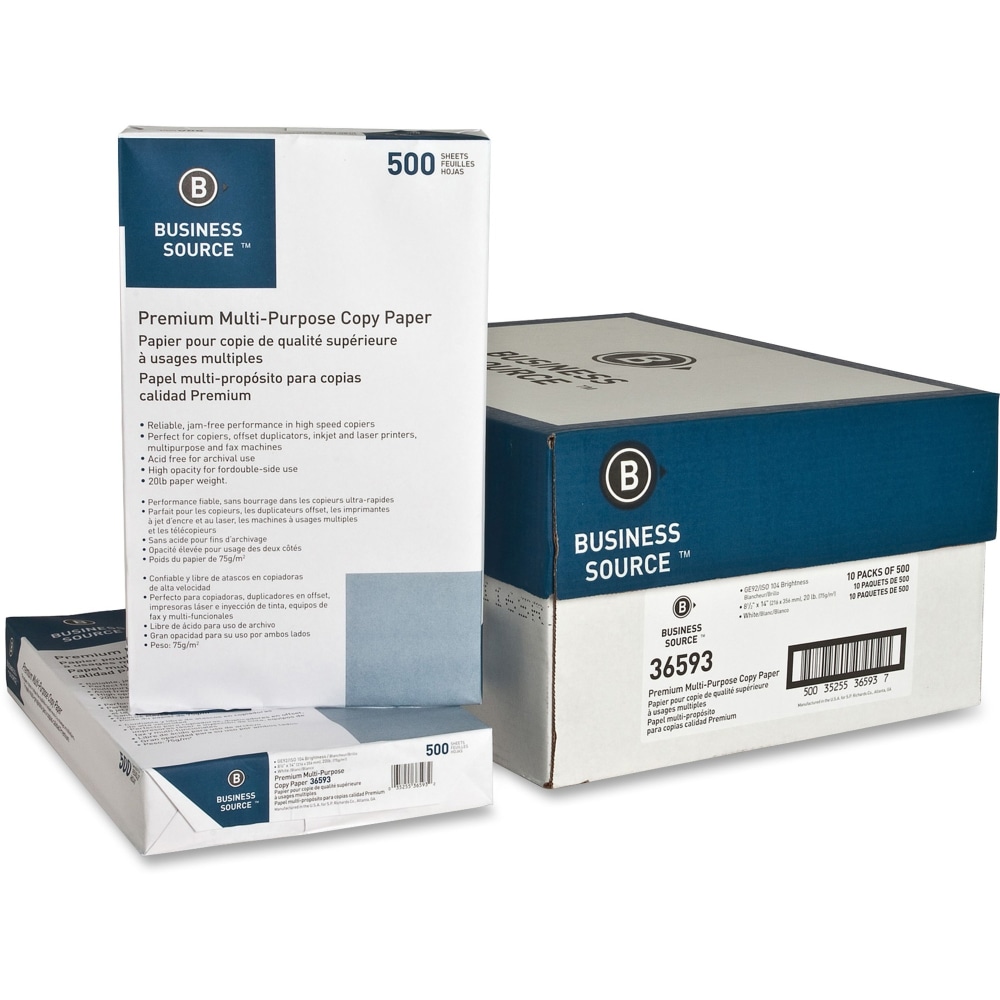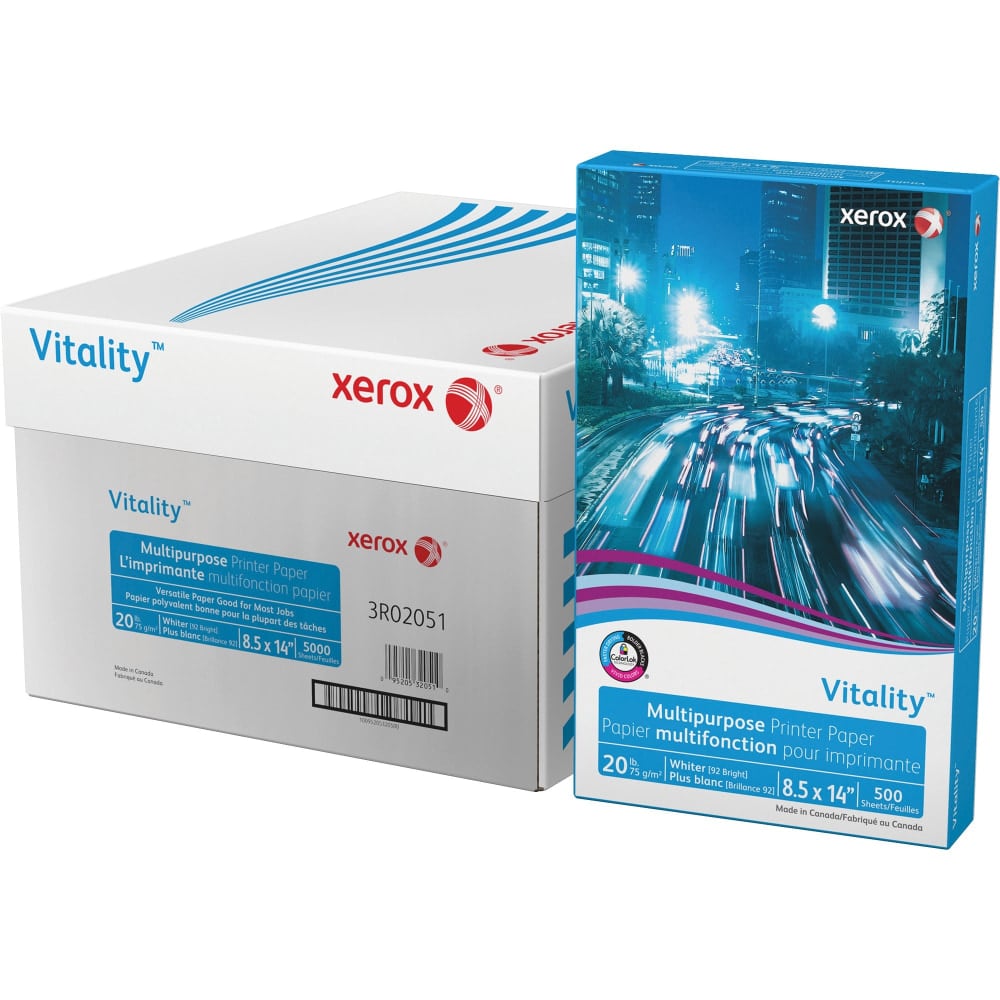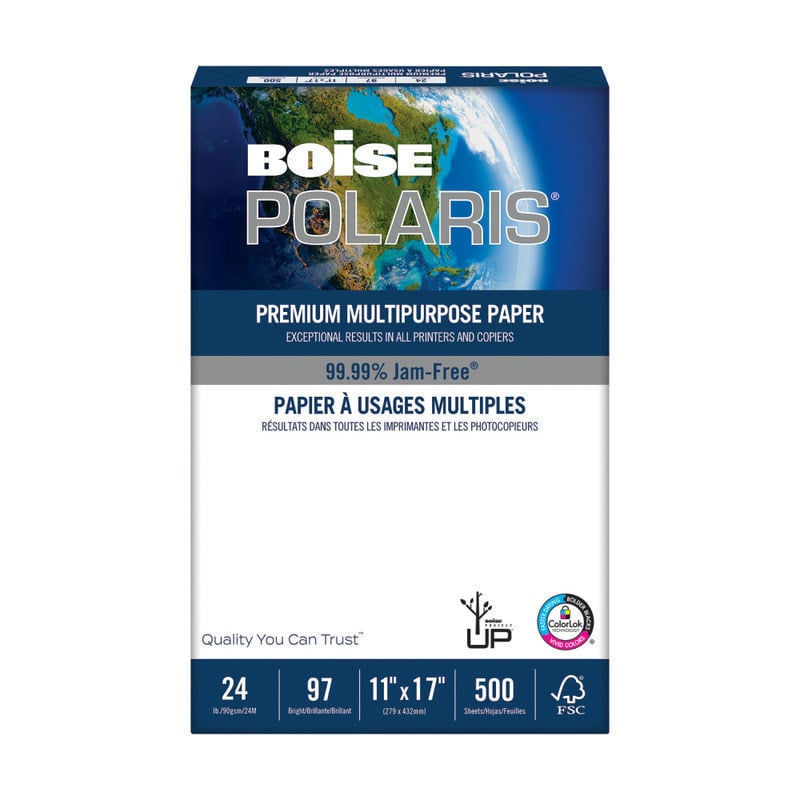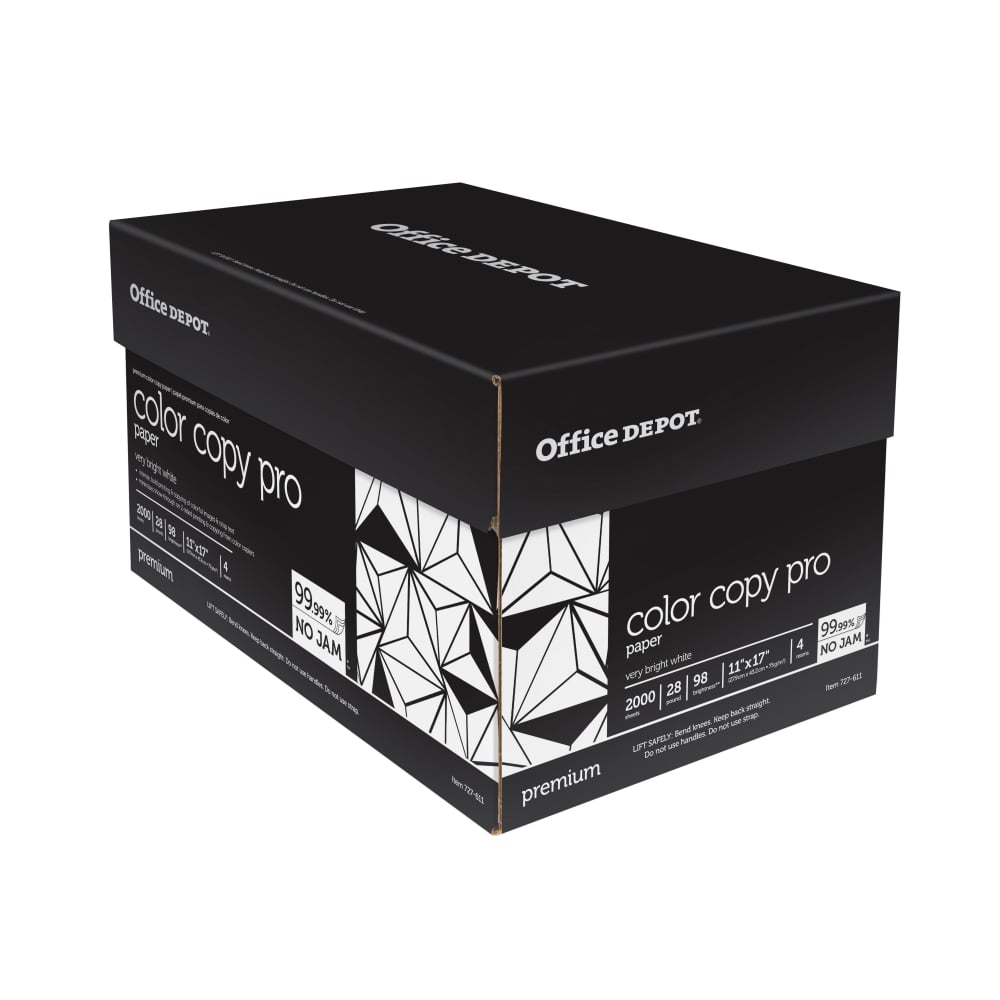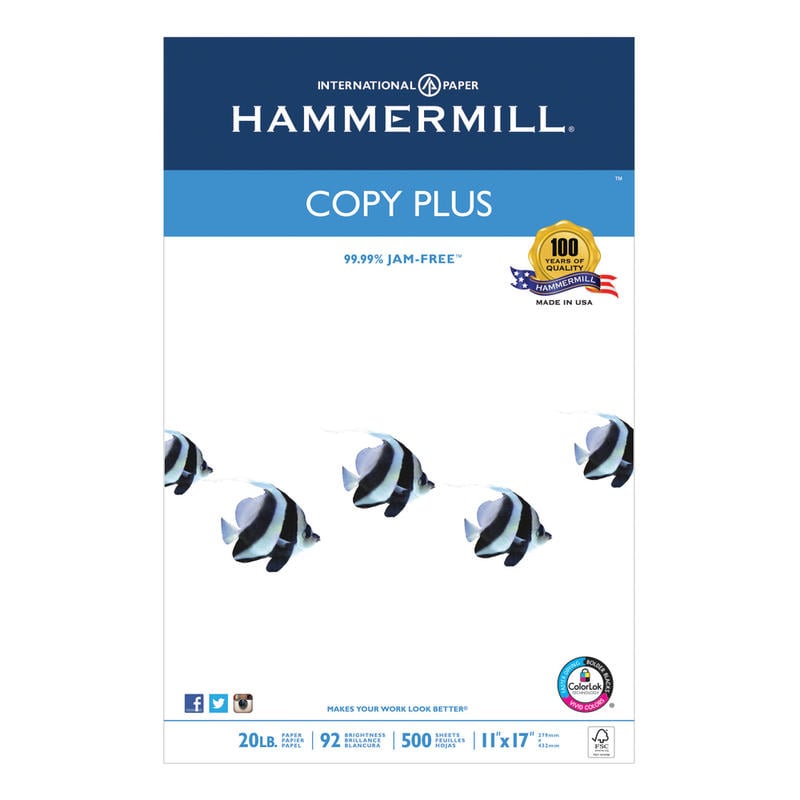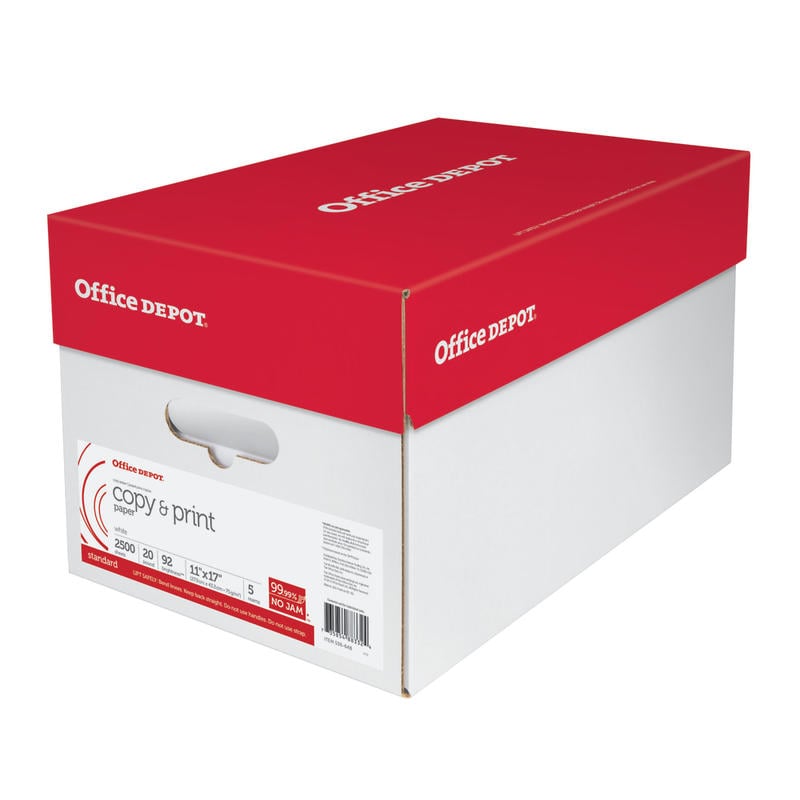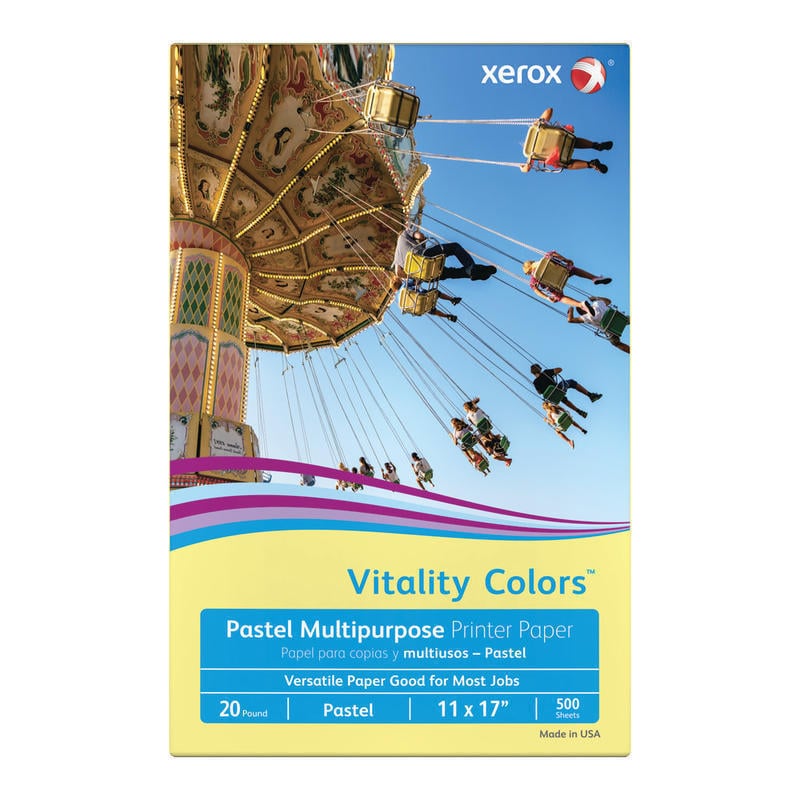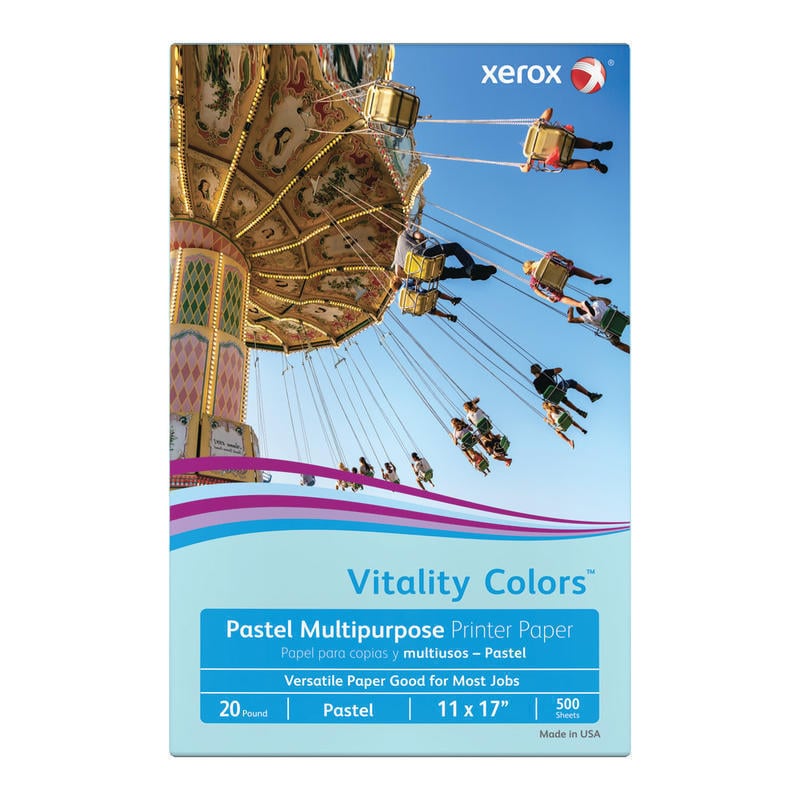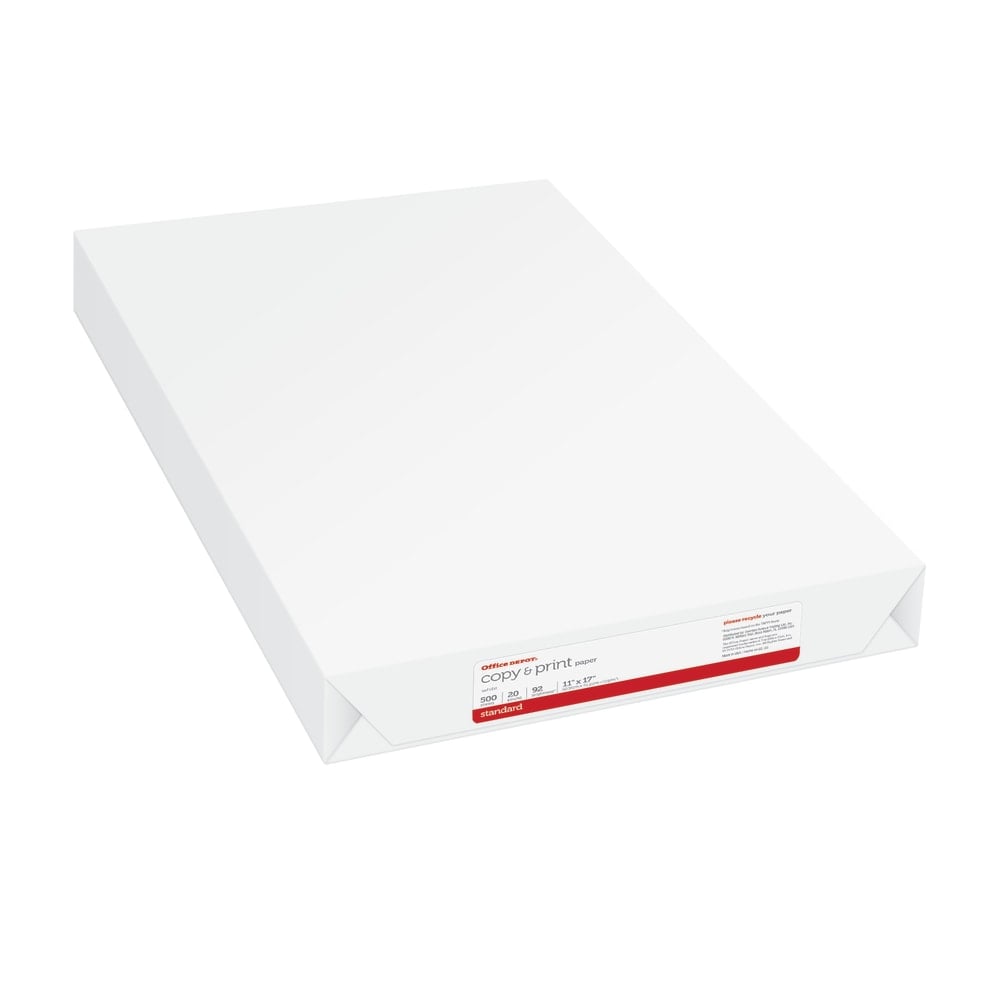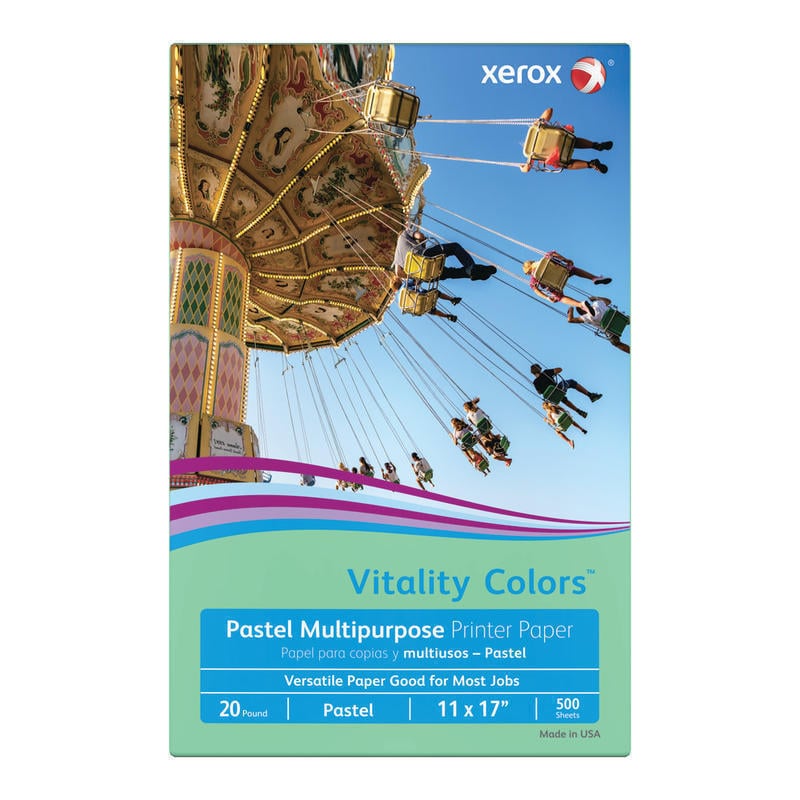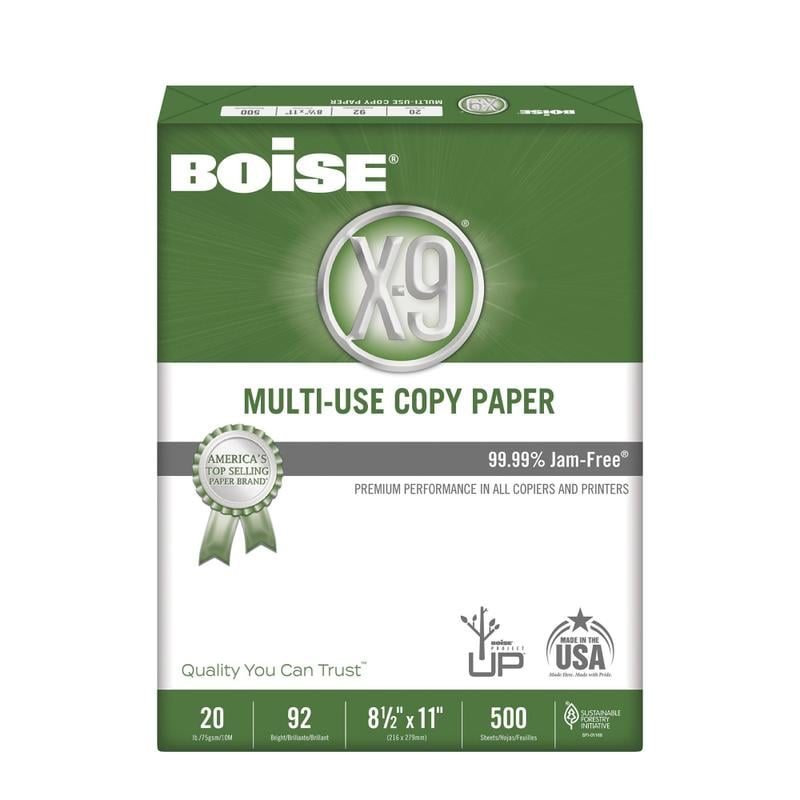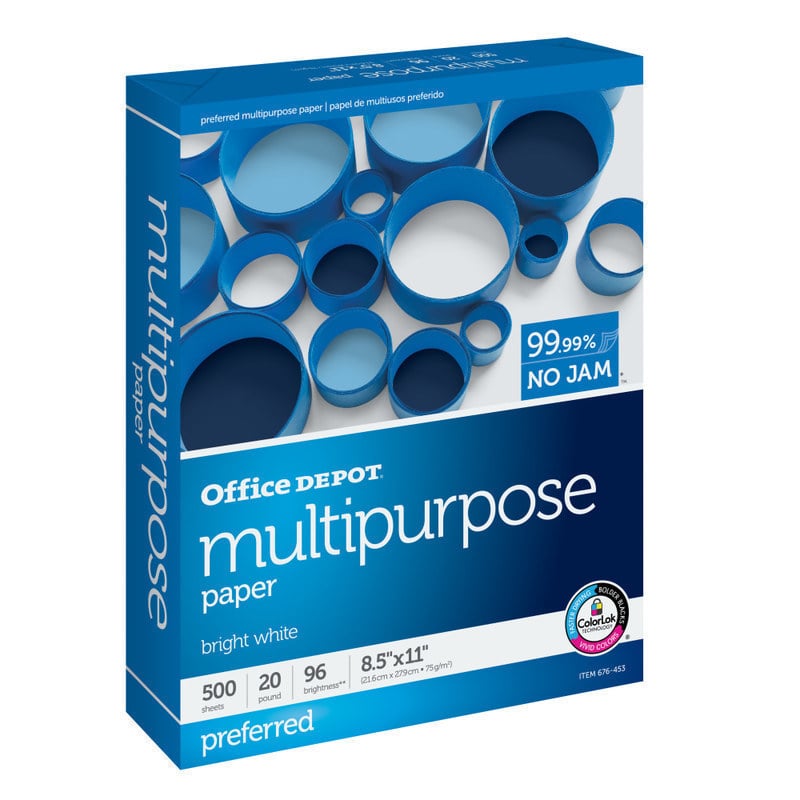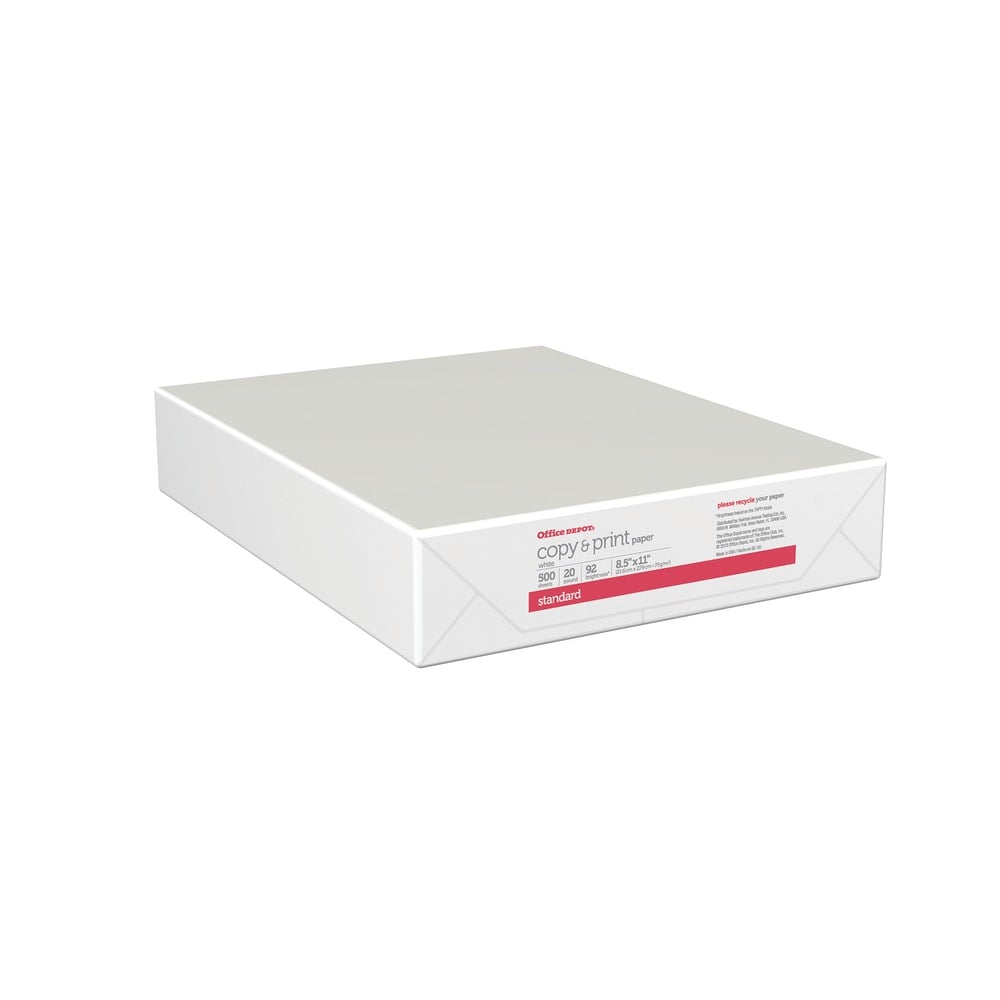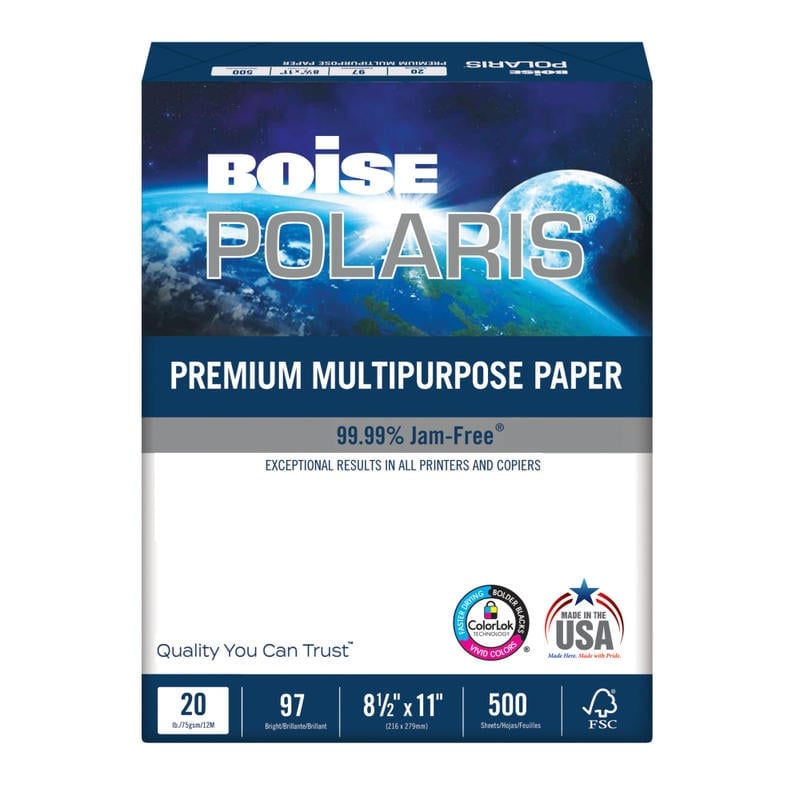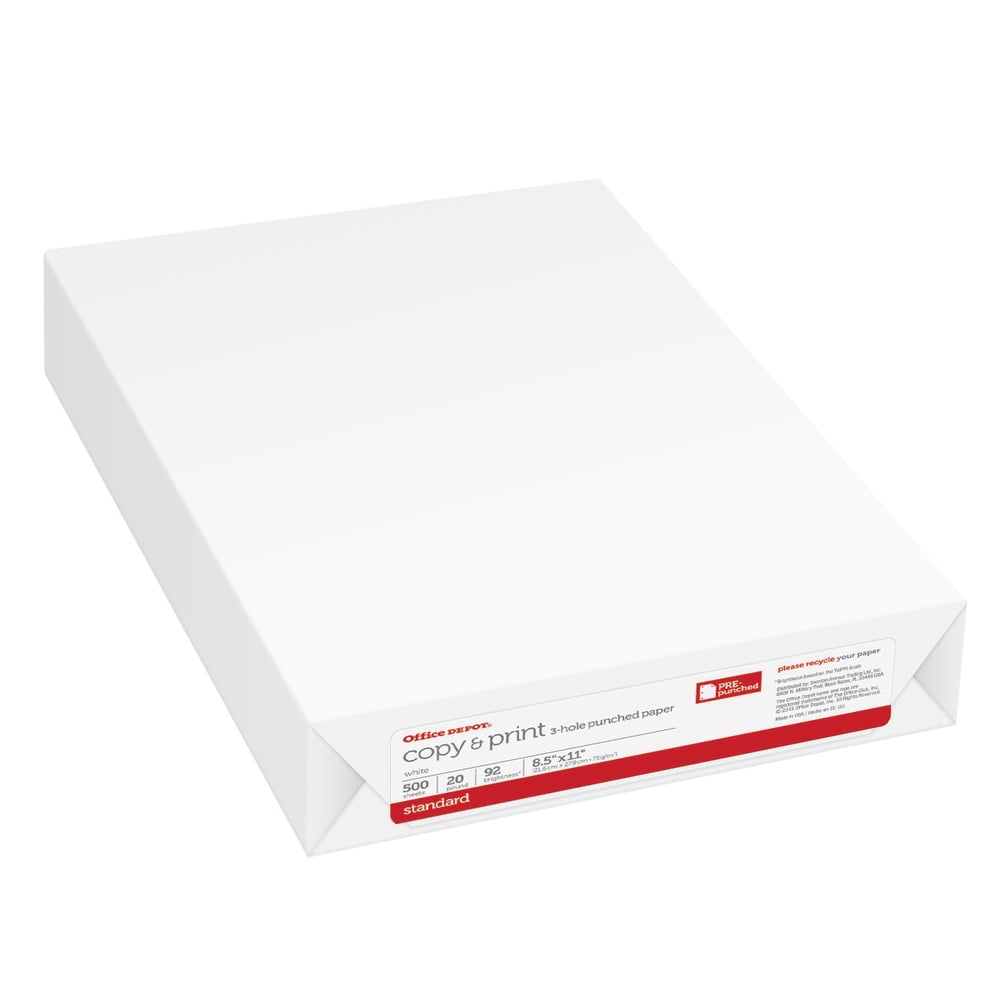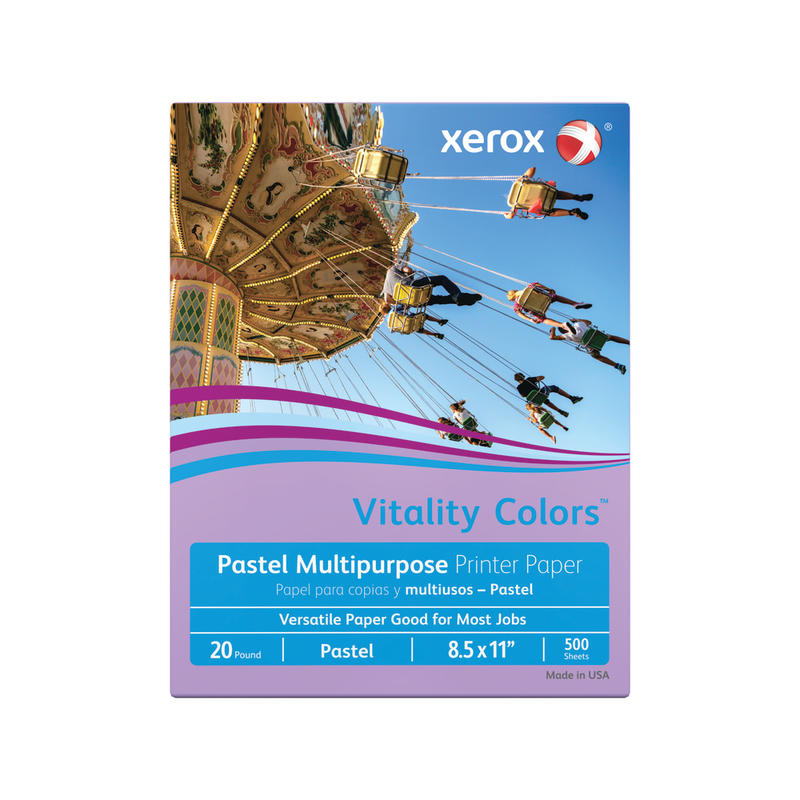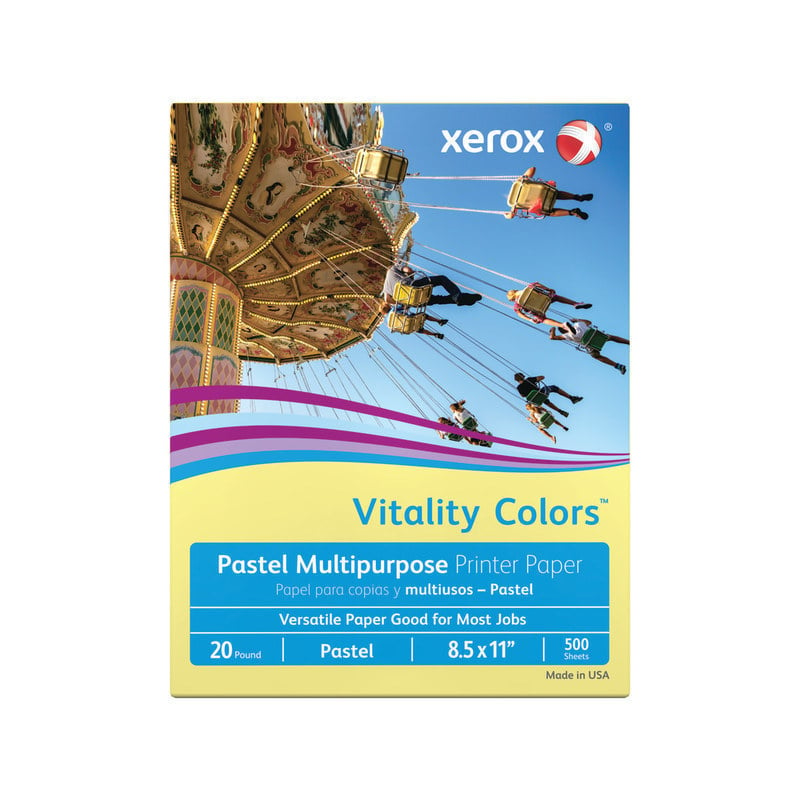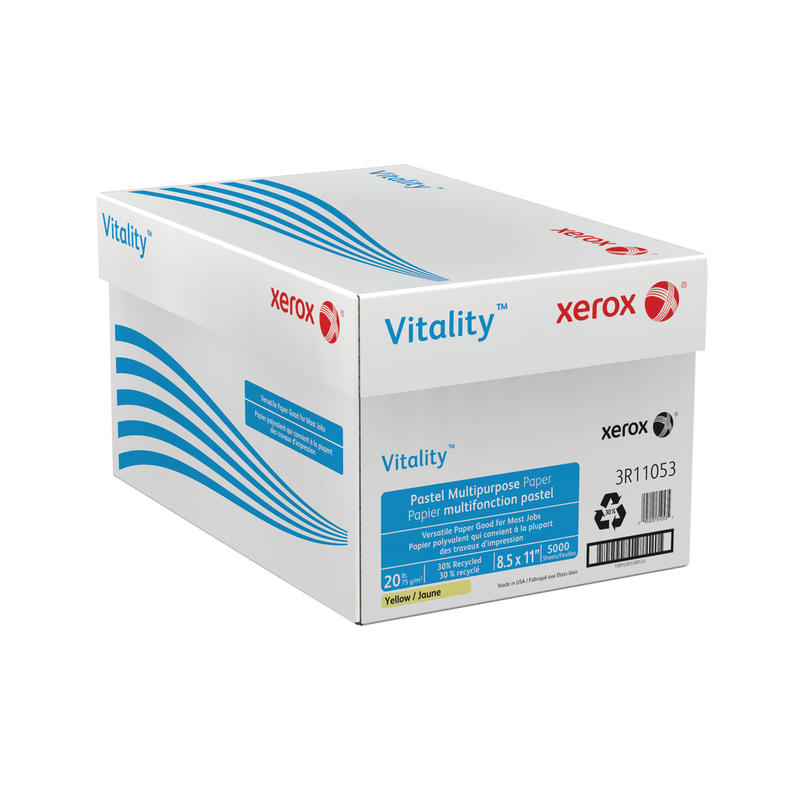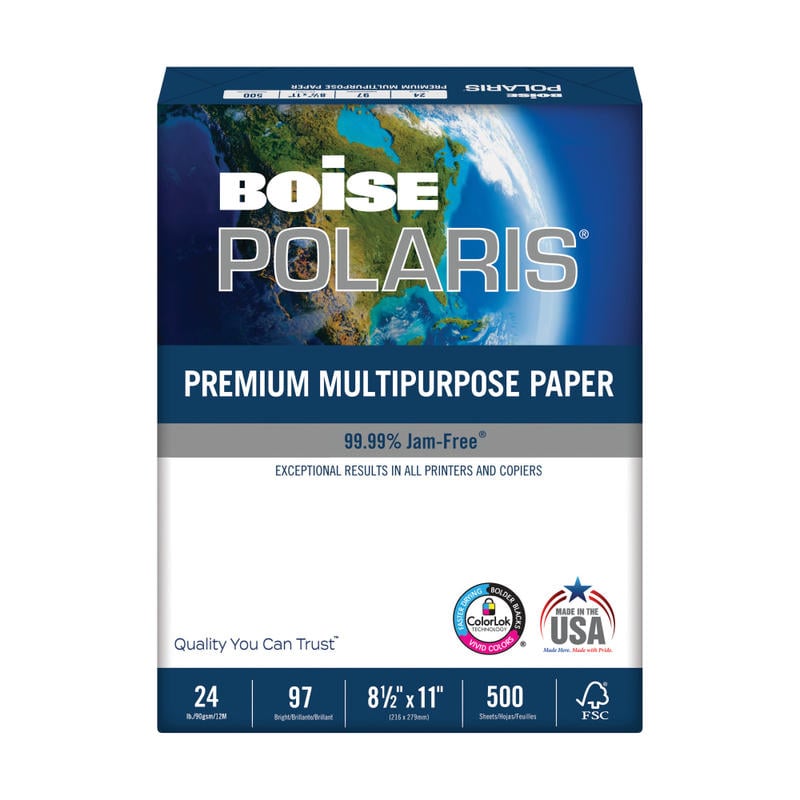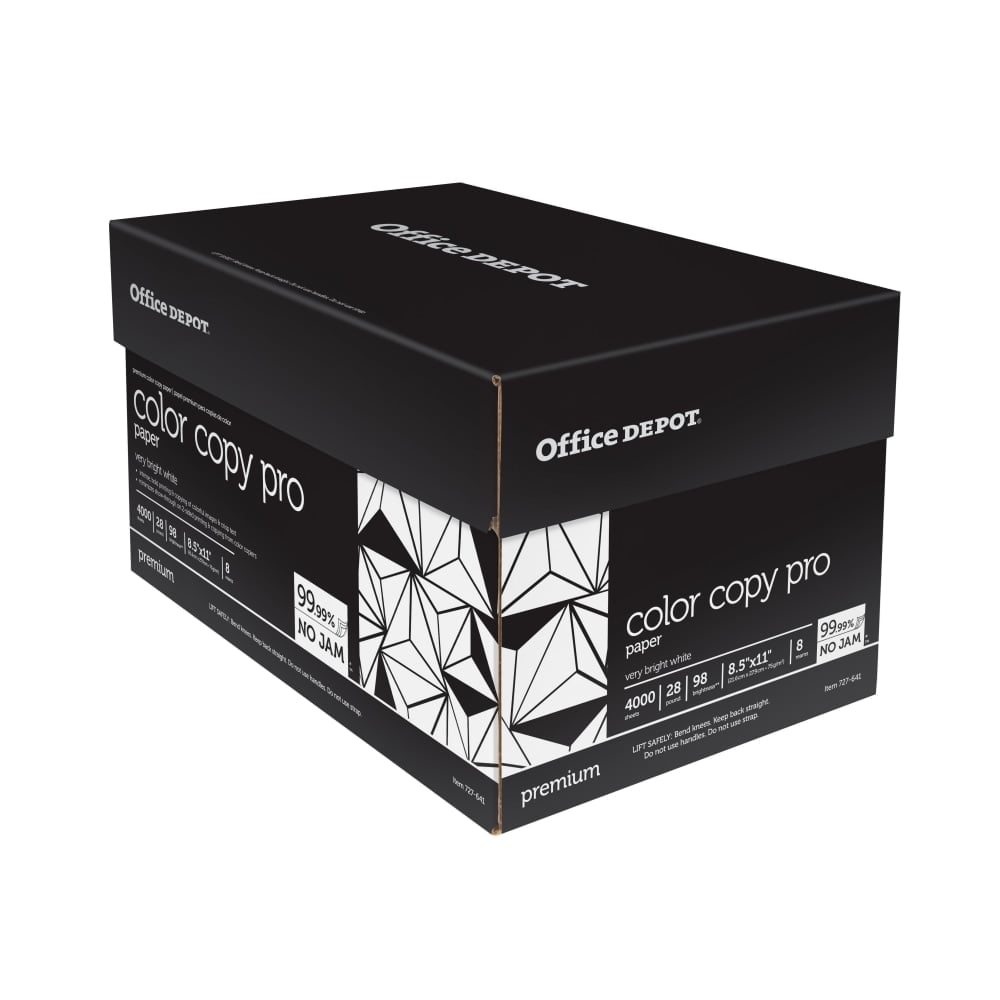Everything You Need to Know About Copy Paper Cases: Types, Sizes, and Uses
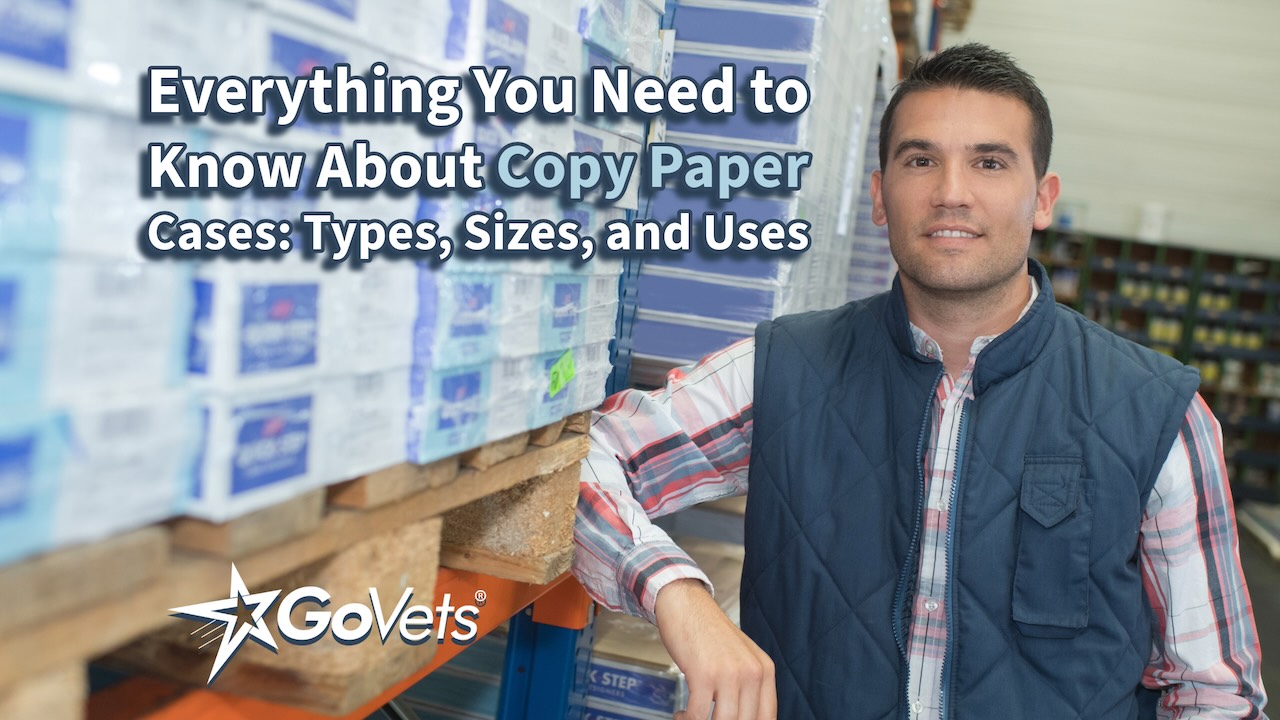
Overview
Are you overwhelmed by the multitude of copy paper options available on the market? Choosing the right type of copy paper can significantly impact the quality of your prints and the efficiency of your printing processes. In this comprehensive guide, we'll dive into everything you need to know about copy paper cases, including the different types, sizes, and their various applications. Whether you're stocking up for your office, school, or home, understanding the nuances of copy paper will help you make informed decisions and achieve optimal results.
Understanding Copy Paper Cases
Copy paper cases, also known as copy paper cartons or reams, are packaging units that contain multiple reams of paper. They are commonly used for bulk purchases, offering convenience and cost savings for businesses and individuals with high-volume printing needs. Let's explore the different types of copy paper cases and their specific characteristics.
A. Types of Copy Paper Cases
1. 10 Reams Copy Paper Cases
10 reams copy paper cases are the most common packaging size for copy paper. Each case typically contains 10 individual reams, totaling approximately 5,000 sheets of paper. These cases are ideal for medium to large businesses, educational institutions, and printing facilities that require a steady supply of paper for daily operations. Examples of 10 Reams Copy Paper:
2. Legal Size Copy Paper Cases
Legal size copy paper cases contain paper that is slightly longer than standard letter size paper, measuring 8.5" x 14". This size is commonly used for legal documents, contracts, and other documents that require extra space for detailed content. Legal size copy paper cases are essential for law firms, government agencies, and businesses dealing with legal paperwork. Examples of Legal Size Paper:
3. 11x17 Copy Paper Cases
11x17 copy paper cases, also known as tabloid or ledger size paper, are larger than standard letter size paper, measuring 11" x 17". This size is commonly used for printing posters, flyers, architectural drawings, and other large-format documents. 11x17 copy paper cases are indispensable for graphic design studios, engineering firms, and advertising agencies. Examples of 11x17 Copy Paper Cases (i.e. Ledger)
4. 3 Reams Copy Paper Cases
3 reams copy paper cases are smaller packaging units that contain three reams of paper, totaling approximately 1,500 sheets. These cases are suitable for small businesses, home offices, and personal use, providing a convenient and manageable quantity of paper without the bulk of larger cases. Examples of 3 Reams Copy Paper Cases:
5. 500 Sheets Copy Paper Cases
500 sheets copy paper cases are compact packaging units that contain a single ream of paper, totaling 500 sheets. These cases are perfect for occasional printing needs, such as homework assignments, personal projects, and crafting activities. 500 sheets copy paper cases are available in various paper weights and colors to suit different applications. Examples of 500 Sheets Copy Paper Cases:
B. Applications of Different Copy Paper Cases
1. 10 Reams Copy Paper Cases
- Everyday Printing: Ideal for printing documents, reports, memos, and forms.
- Copying: Suitable for use in copiers for duplicating documents efficiently.
- Faxing: Compatible with fax machines for transmitting documents electronically.
- Internal Communications: Perfect for printing internal emails, notices, and announcements.
- Archiving: Used for storing and organizing printed documents in file cabinets or storage boxes.
2. Legal Size Copy Paper Cases
- Legal Documents: Essential for printing contracts, agreements, affidavits, and court filings.
- Legislative Materials: Used for printing bills, statutes, ordinances, and regulations.
- Real Estate Documents: Suitable for printing property deeds, leases, mortgages, and title documents.
- Government Forms: Required for printing official government forms, permits, licenses, and applications.
- Financial Records: Used for printing financial statements, invoices, receipts, and tax documents.
3. 11x17 Copy Paper Cases
- Large-Format Printing: Ideal for printing posters, banners, signs, and promotional materials.
- Architectural Drawings: Essential for printing architectural plans, blueprints, and schematics.
- Engineering Diagrams: Used for printing engineering drawings, diagrams, and technical illustrations.
- Presentation Materials: Perfect for printing oversized charts, graphs, and visual aids for presentations.
- Artistic Projects: Suitable for printing artwork, photography, and creative designs for exhibitions and displays.
4. 3 Reams Copy Paper Cases
- Home Office: Perfect for printing personal documents, correspondence, and school assignments.
- Small Businesses: Suitable for printing invoices, receipts, shipping labels, and marketing materials.
- Academic Use: Used for printing study guides, lecture notes, quizzes, and classroom handouts.
- Nonprofit Organizations: Ideal for printing flyers, brochures, newsletters, and fundraising materials.
- Event Planning: Essential for printing invitations, programs, agendas, and registration forms.
5. 500 Sheets Copy Paper Cases
- Occasional Printing: Perfect for printing occasional documents, letters, and emails.
- School Projects: Suitable for printing homework assignments, book reports, and craft projects.
- Arts and Crafts: Used for printing patterns, templates, and designs for art and craft projects.
- Scrapbooking: Essential for printing photos, captions, and decorative elements for scrapbook pages.
- DIY Projects: Perfect for printing templates, instructions, and labels for do-it-yourself projects.
C. How to Choose the Right Copy Paper Case
Choosing the right copy paper case depends on your specific printing needs, preferences, and budget considerations. Here are some factors to consider when selecting a copy paper case:
1. Paper Size
Consider the paper size that best suits your printing requirements, whether it's standard letter size, legal size, or tabloid size.
2. Paper Weight
Choose the appropriate paper weight for your intended use, considering factors such as durability, print quality, and project requirements.
3. Paper Color
Select the paper color that complements your branding, enhances readability, and achieves the desired aesthetic for your printed materials.
4. Quantity
Evaluate your printing volume and frequency to determine the quantity of paper that you need, whether it's a large case for bulk purchases or a smaller case for occasional use.
5. Cost
Compare prices and consider cost-saving options such as buying in bulk or opting for cost-effective paper brands without compromising quality.
D. Understanding Paper Weights: A Crucial Factor in Choosing Copy Paper
When selecting copy paper, one crucial factor to consider is the paper weight. Paper weight refers to the thickness and stiffness of the paper and is typically measured in pounds (lb) or grams per square meter (gsm). Understanding paper weights is essential as it directly impacts the durability, print quality, and suitability for various applications. Let's delve deeper into the different paper weights and their uses:
Standard Paper Weights
- 20 lb Paper: Also known as "standard" or "printer paper," 20 lb paper is the most common weight used for everyday printing tasks. It strikes a balance between affordability and versatility, making it suitable for general office documents, correspondence, and personal use.
- 24 lb Paper: Slightly thicker and more durable than 20 lb paper, 24 lb paper offers improved print quality and enhanced opacity. It is often chosen for documents that require a more professional appearance, such as resumes, presentations, and marketing materials.
Specialty Paper Weights
- 32 lb Paper: Considered heavyweight paper, 32 lb paper is significantly thicker and sturdier than standard printer paper. It is commonly used for premium-quality documents, including brochures, flyers, and promotional materials, where a more substantial feel is desired.
- 28 lb Paper: Falling between 24 lb and 32 lb paper, 28 lb paper offers a compromise between thickness and affordability. It is suitable for applications that require slightly more durability and rigidity than standard printer paper, such as double-sided printing and reports.
Uses of Different Paper Weights
- 20 lb Paper: Ideal for high-volume printing tasks such as daily office documents, emails, and drafts. Its lightweight nature makes it cost-effective for large-scale printing jobs without sacrificing quality.
- 24 lb Paper: Preferred for documents that require a more polished and professional appearance, such as presentations, proposals, and client-facing materials. Its increased thickness minimizes show-through and enhances readability.
- 32 lb Paper: Reserved for premium-quality documents where durability and impact are paramount, such as marketing collateral, invitations, and product catalogs. Its heavyweight construction lends a luxurious feel and enhances the perceived value of printed materials.
- 28 lb Paper: Offers a versatile option for businesses seeking a balance between quality and affordability. It is suitable for a wide range of applications, including double-sided printing, reports, and business correspondence.
Choosing the Right Paper Weight
The choice of paper weight depends on several factors, including the intended use of the printed materials, desired print quality, and budget considerations. Here are some guidelines for selecting the right paper weight:
- Consider the Application: Determine the purpose of the printed materials and choose a paper weight that aligns with the desired outcome. For professional documents or marketing materials, opt for heavier weights to convey quality and professionalism.
- Evaluate Printer Compatibility: Ensure that your printer is capable of handling the selected paper weight without jamming or causing print quality issues. Check the printer specifications and recommended paper weights to avoid compatibility issues.
- Assess Budgetary Constraints: Balance the desired paper quality with budget considerations. While heavier paper weights may offer superior print quality, they often come at a higher cost. Evaluate the cost-effectiveness of different paper options based on your printing needs.
- Test Before Committing: Whenever possible, request paper samples or purchase a small quantity to test compatibility and print quality before committing to a large order. This allows you to assess the suitability of the paper weight for your specific requirements.
Paper weight is a critical consideration when selecting copy paper, as it directly impacts the durability, print quality, and suitability for different applications. Understanding the various paper weights and their uses enables you to make informed decisions and achieve optimal results in your printing projects. Whether you're printing everyday office documents, professional presentations, or premium-quality marketing materials, choosing the right paper weight is key to achieving success. Explore the wide range of paper weights available at GoVets and find the perfect solution for your printing needs.
E. Weight Considerations for Purchasing Copy Paper in Bulk
When considering bulk purchases of copy paper, understanding weight considerations is crucial for logistical planning, storage management, and transportation efficiency. This comprehensive guide explores the various weight aspects associated with different quantities of copy paper, from reams to pallets, while incorporating relevant SEO keywords to enhance visibility and search engine ranking.
Reams of Paper
- Typical Weight Expectation: A standard ream of copy paper, comprising 500 sheets, generally weighs around 5 pounds (2.27 kilograms), offering a benchmark for individual packaging units.
- Storage Size Recommendations: Reams of copy paper are conveniently sized for storage on shelves, desktops, or file cabinets, offering ease of access and organization within office environments.
Cases of Paper
- Typical Weight Expectation: A case of copy paper typically contains 10 reams, totaling approximately 50 pounds (22.68 kilograms), making it suitable for medium to large-scale printing requirements.
- Storage Size Recommendations: Cases of copy paper necessitate more substantial storage space compared to individual reams, requiring sturdy shelving or cabinets for organization and accessibility.
Boxes of Paper
- Typical Weight Expectation: The weight of a box of copy paper can vary based on the quantity of reams it contains, with standard boxes weighing between 25 to 50 pounds (11.34 to 22.68 kilograms) to accommodate 5 to 10 reams.
- Storage Size Recommendations: Versatile and portable, boxes of copy paper offer flexibility in storage arrangements, with stackable options suitable for palletizing or placement on storage racks.
Pallets of Paper
- Typical Weight Expectation: A pallet of copy paper encompasses multiple cases or boxes, varying significantly in weight depending on the quantity and paper weight, with standard pallets weighing between 1,500 to 2,500 pounds (680 to 1134 kilograms) or more.
- Storage Size Recommendations: Pallets of copy paper demand ample warehouse space and specialized handling equipment, necessitating proper ventilation, climate control, and load-bearing capacity for storage.
Considerations for Bulk Purchasing
- Shipping and Handling: Bulk purchases of copy paper require consideration of weight limitations, shipping requirements, and handling logistics to ensure smooth transportation and delivery processes.
- Storage Capacity: Assessing storage capacity and infrastructure is crucial for accommodating bulk quantities of copy paper, with factors such as floor space, shelving capacity, and accessibility influencing storage arrangements.
- Inventory Management: Implementing robust inventory management practices enables efficient tracking, monitoring, and replenishment of copy paper stock, optimizing supply chain operations and minimizing stockouts.
Weight considerations are integral to the bulk purchasing of copy paper, guiding logistics, storage, and inventory management processes for businesses and organizations. By understanding the typical weight expectations for different packaging units and following recommended storage size guidelines, stakeholders can streamline procurement, optimize storage space, and ensure efficient handling of copy paper inventory. Explore the diverse range of copy paper options available at GoVets, incorporating premium quality and cost-effective solutions to meet diverse printing needs effectively.
Final Thoughts
In conclusion, understanding the different types of copy paper cases, their sizes, and applications is essential for making informed purchasing decisions. Whether you're running a business, managing a school, or organizing a creative project, choosing the right copy paper will ensure optimal results and maximize productivity. By considering factors such as paper size, weight, color, quantity, and cost, you can select the perfect copy paper case to meet your specific printing needs. Remember to explore reputable suppliers like GoVets for a wide selection of high-quality copy paper cases at competitive prices. Happy printing!


